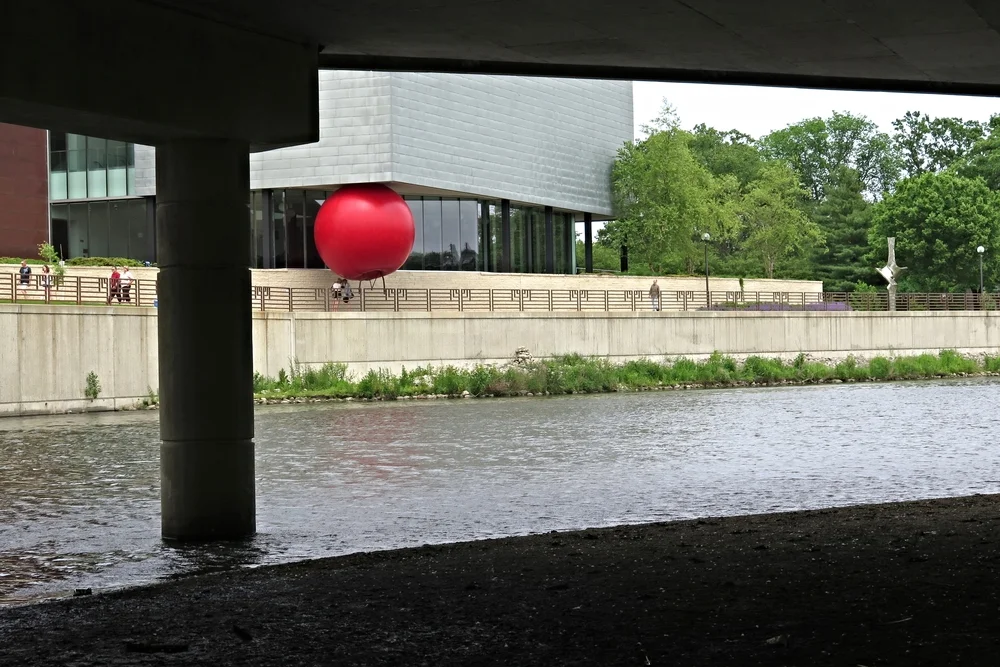Feeling cramped, Rochester Police Dept. explores options for expansion
As Rochester fixates itself on figuring out how to handle unprecedented growth under the Destination Medical Center initiative, the city's police department is mapping out its own future.
On Monday, BKV Group, a Minneapolis-based consulting firm, will present the city council with a list of recommendations on how the police department could address future space needs. The council approved the feasibility study last year at the department's request.
"From a timing standpoint, I think we want to be proactive," said Rochester City Council President Randy Staver in an email to the Med City Beat. Doing so will allow the city to "plan more thoughtfully rather than perhaps need to react to some urgent situation."
But according to the study, which was published in the council's agenda packet ahead of the meeting, the department is already running out of room for vehicles, equipment and offices.
With no room left for growth at the government center, consultants from BVK are proposing four different options:
A. Utilize existing space at the government center and expand into county's space (county vacates building)
B. Build a new central station with all services at one location
C. Utilize and remodel existing space, build a new north station and build new patrol/parking garage
D. Build new central and north stations
The challenge with "option A" is it would require the county, which is facing space constraints of its own, to give up room in the building. The other three options, requiring construction of new facilities, would satisfy space concerns but could present financial challenges for the city.
Graphic: BKV Group / Council agenda packet
A new central station would be beneficial because it could serve as a hub for all local law enforcement personnel and equipment. It would also give the county the room it needs to expand in the government center.
But according to the study, the cost of acquiring land for a new building in downtown Rochester could be a deterrent; while building a central station too far from the government center could cause operational issues (like access to judges and county staff).
The possibility of building a new precinct on the north side of town appears, at least right now, to be the most viable option. Though construction of the new building could cost around $19 million, the city wouldn't have to purchase any additional land.
Under the proposal, the north precinct would be built next to the Public Works and Transit Operations Center, located on East River Road NE.
Graphic: BKV Group / Council agenda packet
The police department has been using some of the transit center's office and garage space for the past few years. While the arrangement has been beneficial, there's no guarantee the space will remain available down the road.
"[Public works] can kick us out at any time because they're growing as well," Rochester Police Capt. John Sherwin told the Med City Beat. "We have a finite timeline for how long we can be there. It could be a year, it could be five years, or it could be next week."
It's unclear how soon the city intends to move forward with a long-term plan for the department. But Staver admitted it's only a matter of time before a police presence is needed elsewhere in the city.
"It seems natural that as Rochester continues to grow in terms of size and complexity, so will the need for all forms of public infrastructure including police and fire," he said. "One option I will be interested in hearing more about would be a shared facility to accommodate multiple emergency service entities."
Graphic: BKV Group / Council agenda packet
When police first moved into the government center in 1993, it had 98 sworn officers and 30 civilian staff. The city's population was under 80,000.
The department now employs 135.5 officers and 59 civilian staff, while the number of people living in Rochester has grown to 111,402. That number is expected to top 140,000 in just the next 15 years.
In addition to space, the department is also concerned about response times, which have increased to 12-28 minutes in some parts of the city. The problem, Sherwin said, there aren't enough officers to cover each beat — forcing them to sometimes travel from one end of town to the other to answer a call.
"We don't ever have the beats fully staffed," Sherwin said.
Police Chief Roger Peterson is requesting 13 additional positions in 2016. At a cost of about $1.4 million, the additional staff would represent a 7 percent increase to the department's budget.
Graphic: BKV Group / Council agenda packet
Despite inadequate response times, Rochester's crime rate has actually been on the decline for the past couple decades.
The total number of crimes dropped from 5,850 in 2013 to 5,828 in 2014, a decrease of about 0.3 percent. When adjusted for a small population increase, the crime rate dropped by 1.4 percent.
The number of violent crimes — murders, rapes, robberies and assaults — dropped by 5.6 percent. The department reported 52 robberies and 107 serious assaults in 2014.
Violent crime rates are 56 percent lower in Rochester than in other similar size cities in the U.S. Property crime rates are 37 percent lower.
Graphic: The Med City Beat / Data: Minnesota Department of Public Safety









